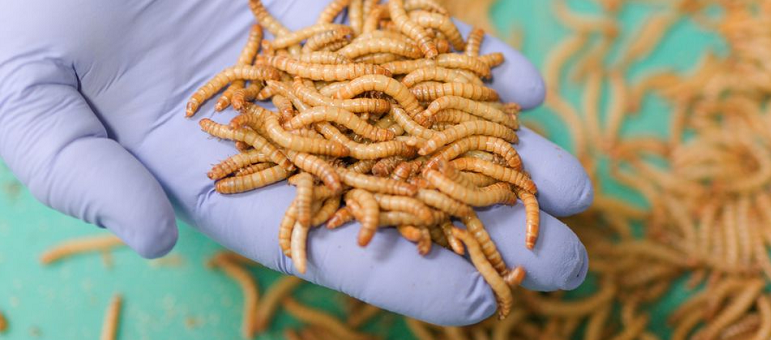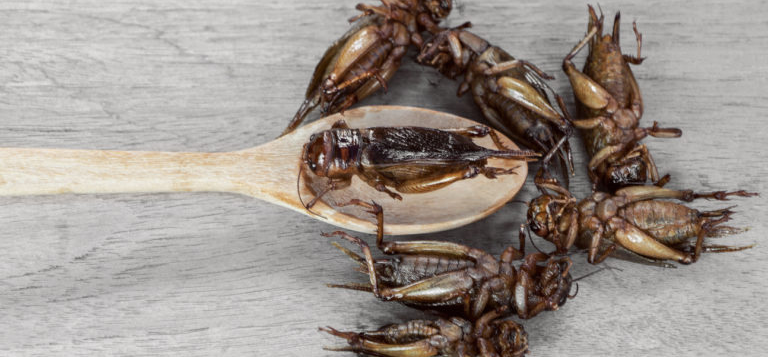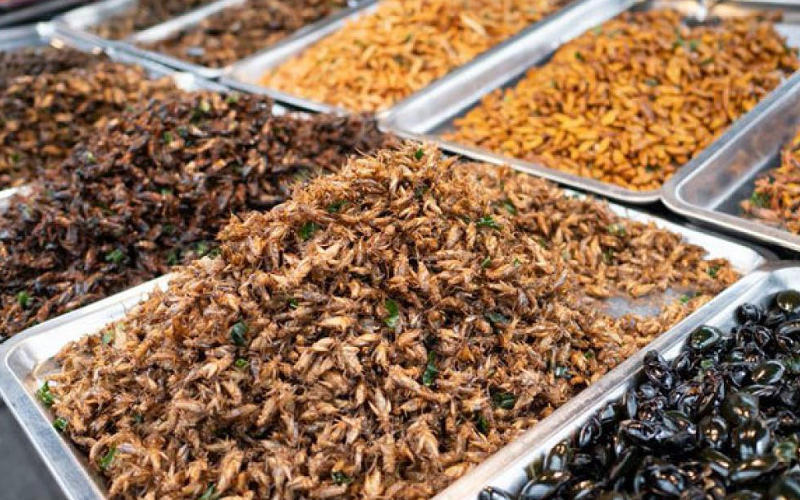Insects have been a staple food source in many cultures for centuries, but are now gaining recognition as a sustainable and economically viable alternative protein source in Western societies. With the world population projected to reach 9.7 billion by 2050, there is a growing need to find sustainable and efficient protein sources to feed the growing demand. Insects have several advantages over traditional protein sources, including a lower environmental impact, lower costs, and a high nutritional value.
Defining Insects as an Alternative Protein Source
Insects as an alternative protein source refers to the use of insects as a food source for both humans and animals. This includes insects such as crickets, beetles, caterpillars, and grasshoppers, which are rich in protein, healthy fats, vitamins, and minerals.
Insects have been consumed as food in many cultures around the world for centuries, but have only recently gained recognition as a sustainable and economically viable alternative protein source in Western societies. With the world population projected to reach 9.7 billion by 2050, there is a growing need to find sustainable and efficient protein sources to meet the growing demand for food.
Insects offer several advantages over traditional protein sources, including their low environmental impact, low costs, and high nutritional value.
Background Information on Insects as a Protein Source
Insects have been consumed as food by humans for centuries in many cultures around the world. In recent years, insects have gained recognition as a sustainable and economically viable alternative protein source in Western societies. The popularity of insects as a protein source has grown due to their high nutritional value, which includes high levels of protein, healthy fats, vitamins, and minerals.
Historically, insects have been a staple food source in many cultures and have been used in traditional dishes and medicinal remedies. In recent years, with the rise of sustainable and eco-friendly food options, insects have gained popularity as a source of protein due to their low environmental impact, low costs, and high nutritional value.

Insects are also a popular protein source for animal feed, particularly for chickens and fish, as they provide a high-quality protein source at a lower cost than traditional protein sources such as soybeans and fishmeal. The use of insects as a protein source for animal feed is expected to grow as the demand for sustainable and efficient protein sources increases.
The use of insects as a protein source has the potential to provide a sustainable and economically viable alternative to traditional protein sources, making it a promising option for meeting the growing demand for food in a rapidly changing world.
The Economics of Insects as a Protein Source
The economics of insects as a protein source involves a comparison of the costs of insect production with those of traditional protein sources, such as meat and soybeans. Insects have several advantages over traditional protein sources when it comes to cost. They require less land and water to produce, have a lower greenhouse gas emissions, and can be produced at a lower cost.
One of the key benefits of insect farming is that it requires less land and water compared to traditional livestock farming. This results in lower costs for farmers, as they need to invest less in resources such as feed, water, and land. Additionally, insect farming produces lower greenhouse gas emissions compared to traditional livestock farming, making it a more environmentally sustainable option.
Insects as a protein source offer several economic benefits for farmers and consumers. For farmers, insect farming is a low-cost and sustainable alternative to traditional livestock farming. Insects require less land and water, and emit fewer greenhouse gases, making them a more environmentally friendly option. Additionally, insects can be produced at a lower cost compared to traditional protein sources, as they require less feed and can be raised in smaller spaces.

For consumers, insects offer a cost-effective alternative to traditional protein sources. As the demand for sustainable and efficient protein sources increases, the cost of insects is expected to decrease, making them more accessible to a wider range of consumers.
Despite the advantages of insect farming, there are several challenges to the widespread adoption of insects as a protein source. One of the main challenges is the perception and cultural barriers associated with consuming insects. In Western societies, insects are often perceived as pests and are not widely accepted as a food source.
Another challenge is the limited supply chain and distribution of insects as a protein source. Currently, there are few insect farms, and the supply of insects is limited. This results in higher costs for consumers and limits the availability of insects as a protein source.
The economics of insects as a protein source offer several advantages over traditional protein sources. However, there are still challenges to be overcome in terms of perception and cultural barriers, as well as limited supply chain and distribution, before insects can become a widely adopted and economically viable alternative protein source.
To overcome these challenges, further investment and research is needed to develop efficient and scalable insect farming practices, as well as to educate consumers about the benefits of insects as a protein source. Additionally, the development of new and innovative products, such as insect-based protein powders and bars, can help to increase the availability and accessibility of insects as a protein source.

Sustainability of Insects as a Protein Source
The sustainability of insects as a protein source refers to their impact on the environment, society, and the economy. Insects offer several sustainability benefits compared to traditional protein sources, such as meat and soybeans.
One of the key benefits of insect farming is its lower environmental impact. Insects require less land and water compared to traditional livestock farming, and they emit fewer greenhouse gases, making them a more sustainable option. Additionally, insect farming can be done in urban areas, reducing the need for transportation and reducing its carbon footprint.
Insects also offer social sustainability benefits, particularly in rural areas. Insect farming can create jobs in areas where employment opportunities are limited, and it can support local communities by providing a source of food and income.
However, there are also challenges to the sustainability of insect farming. One of the main challenges is the lack of regulation and standardization in the industry, which can result in the over-exploitation of insect populations and the degradation of the environment.
Additionally, there is a risk of over-exploitation of insect populations, particularly in areas where insects are collected from the wild. This can lead to a decline in the population of insects, which can have negative impacts on the environment and the food chain.
Insects offer several sustainability benefits as a protein source, including a lower environmental impact, potential for job creation in rural areas, and support for local communities. However, there are also challenges to the sustainability of insect farming, including a lack of regulation and standardization, and the risk of over-exploitation of insect populations. To ensure the sustainability of insects as a protein source, further research and regulation is needed to promote sustainable and responsible insect farming practices.

